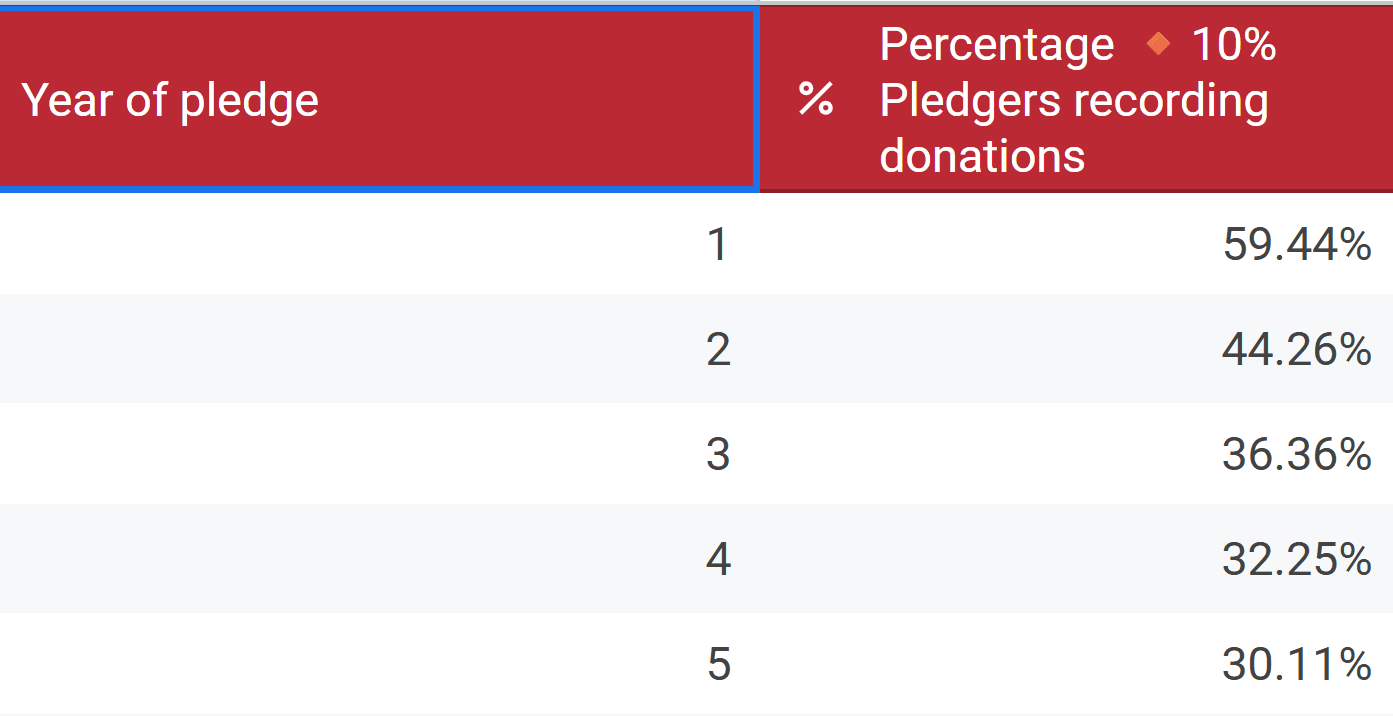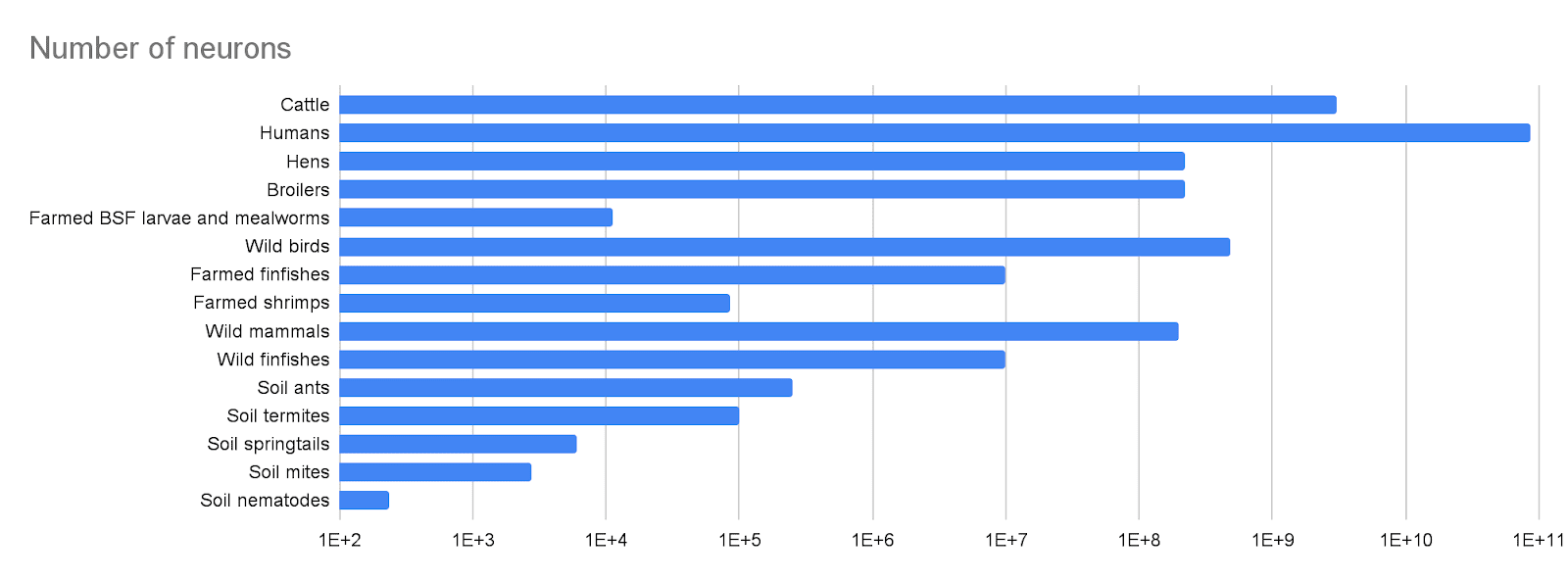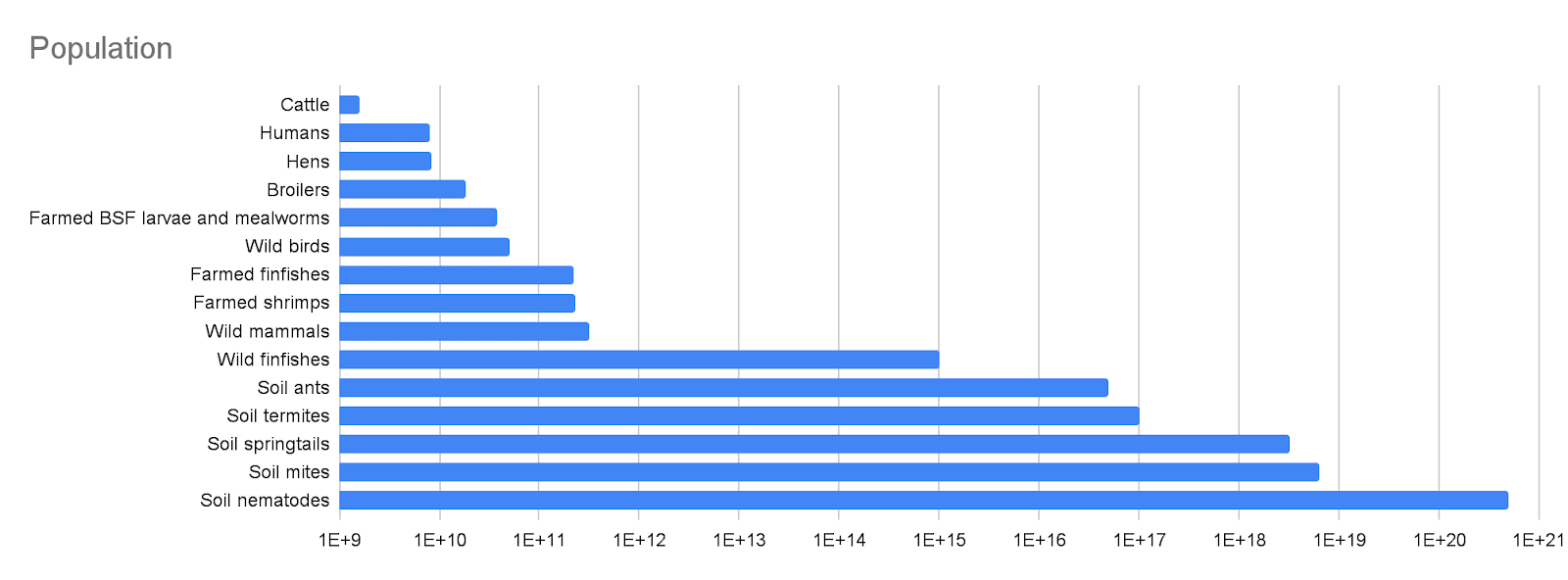Vasco Grilo🔸
Bio
Participation4
I am looking for work, and welcome suggestions for posts.
How others can help me
I am looking for work. I welcome suggestions for posts. You can give me feedback here (anonymously or not). Feel free to share your thoughts on the value (or lack thereof) of my posts.
How I can help others
I can help with career advice, prioritisation, and quantitative analyses.
Posts 208
Comments2535
Topic contributions33
Thanks for sharing, Frankie!
If you’ve been in a similar situation, I hope this post helps you to know you’re not the only one!
I guess there are many people in a similar situation. Below are GWWC's estimates for the fraction of 10 % Pledgers recording their donations across time. The fraction fulfilling the 10 % Pledge is higher because not everyone reports their donations, but I think the numbers below still suggest a meaningful fraction of pledgers are behind on their pledge.

Thanks for sharing your thoughts, Guillaume!
I would rank planarians lower than insects but higher than nematodes (their behaviors seem less chaotic, but I'm no nematode expert).
This is my intuition too considering planarians' number of neurons, and that "number of neurons"^0.188 explains the welfare ranges in Bob's book quite well. Bray et al. (2024) says planarians' "number of neurons may fluctuate between ∼1,000 and ∼100,000 in a single animal during growth and degrowth". Based on this, and the estimates below I collected, it looks like planarians have more neurons than nematodes, roughly as many as black soldier fly (BSF) larvae, mealworms, and soil springtails and mites, and up to as many as shrimps, and soil ants and termites.

I would be more interested in finding out if these animals somehow have a "lighter" form of sentience, as I'm not fully convinced sentience (as for current definitions) is either absent or present.
This reminded me of the article “All animals are conscious”: Shifting the null hypothesis in consciousness science by Kristin Andrews. I agree a greater focus on how instead of whether animals are conscious or sentient would be more helpful to assess their welfare.
I could not find any estimates for total numbers of individuals or colonies. Here again, instinctively, I would assume that they are still way less numerous than nematodes or even insects. Because they are very small (usually around 1-2 cm depending on the species)
Among farmed/wild animals only (not considering farmed and wild animals together), smaller animals tend to be more numerous.

Thanks for the interesting post, Guillaume!
Do you have a guess for the probability of planarians being sentient? For context, here are the estimates for the probability of sentience estimated in Bob Fischer's book about comparing welfare across species. I would think about a guess before checking Bob’s estimates, and then update the guess.
Planarians may not be a top priority animal to study or to care for
Animals with a low probability of sentience may still be a priority if they are sufficiently abundant. You may be interested in my post Total number of neurons and welfare of animal populations.
Thanks for the relevant comment, Nick. I strongly upvoted it because I felt it was useful for me to think about this more.
I recommend funding A over B if I think funding A increases welfare more cost-effectively at the margin than funding B (in expectation). However, my numerical estimates of the cost-effectiveness do not integrate all the information I have. If my numerical estimates for the cost-effectiveness of 2 interventions are similar, other factors could easily be decisive.
I agree it would not make sense for a whole community to switch back and forth between 2 interventions with similar positive cost-effectiveness at the margin. The amount of resources moving from the most to the least cost-effective intervention at the margin should tend to 0 as the difference between the marginal cost-effectiveness of the interventions tends to 0.
I also agree it would not make for a single person to be constantly switching back and forth between 2 interventions with similar positive cost-effectiveness at the margin. Spending 1 year to switch to a career path which is 0.1 % more impactful per year, accounting for impact through work and donations, would only make sense if one could work for longer than 1 k years (= 1/10^-3) in the new path. This is way too long, and therefore the change would not be worth it.
However, I think the situation is different in the context of constantly switching back and forth between supporting or not an intervention due to large uncertainty about whether it increases or decreases welfare (in expectation). Constant switching leads to spending resources without achieving nothing, which is worse than supporting positive interventions. However, it is unclear whether achieving nothing is better or worse than supporting an intervention which can easily have a positive or negative cost-effectiveness.
In cases where there is large uncertainty about whether an intervention increases or decreases welfare (in expectation), I believe it is often better to support interventions decreasing that uncertainty. This is a major reason for my top recommendation of decreasing the uncertainty about whether soil nematodes have positive or negative lives, which I consider robustly better than constant switching. As I say in the summary, "I am arguing for, by increasing cost-effectiveness, changes in food consumption which increase agricultural land, the most cost-effective global health interventions, and targeted research on whether soil animals have positive or negative lives".
Thanks, Kestrel. I would also prefer soil animals to have positive lives, which would mean a much higher global welfare. However, that also lead to counterintuitive conclusions. I would estimate interventions increasing agricultural land, like cage-free and broiler welfare reforms, and saving human lives, would decrease welfare.
Thanks for the interesting post, David.
In our first survey, we recruited 1,453 US adults from the Prolific.co platform, weighting responses to match the US general population across sex, age, education, income, race/ethnicity, region, and political party identification.
It would be interesting to know whether the results vary by demographic. If yes, I wonder whether a sample representative of the US general population is the most adequate. At least historically, the people getting involved with EA have been relatively younger, and had a higher income and level of education. CEA may want to be more broadly appealing, but arguably not to the whole US general population.
I have looked into the impact of Stop the Farms (SF) on soil animals. For your result that it decreases 55 broiler-years per $, I estimate it causes 662 billion deaths of soil animals per $ due to decreasing the agricultural land needed to feed broilers. The vast majority of the deaths from soil animals are from soil nematodes, and some of these seem very painful. For a spending on SF of 35 k$/employee-year, it causes 23.2 quadrillion deaths of soil animals per employee-year.

Great work, Agnes! I also liked reading about the explanations for the changes.